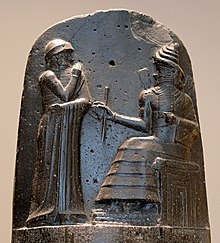
Back Década del 1790 e.C. AST Années 1790 av. J.-C. French 1790idí RC Irish ძვ. წ. 1790-იანები Georgian Década de 1790 a.C. Portuguese 1790-е годы до н. э. Russian ක්රිපූ 1790ගණන් Singhalese 90. roky 18. storočia pred Kr. Slovak Miaka ya 1790 KK Swahili Dekada 1790 BC Tagalog
This article needs additional citations for verification. (March 2023) |

| Millennium |
|---|
| 2nd millennium BC |
| Centuries |
| Decades |
| Years |
|
| Categories |
The 1790s BC was a decade lasting from January 1, 1799 BC to December 31, 1790 BC. During this decade, the Near East was in the midst of the Middle Bronze Age.
Going by the middle chronology, the Babylonian Empire saw the death of its king, Sin-Muballit in c. 1792 BC. He was succeeded by Hammurabi, who would go on to compose the Code of Hammurabi, the best-preserved legal text from the ancient Near East. Shamshi-Adad I, king of Assyria, continued his conquests, defeating Yahdun-Lim of Mari.
The Middle Kingdom of Egypt was ruled by the Thirteenth Dynasty at this time. The chronology of Pharaohs during this decade is uncertain, but Sonbef, Sekhemkare, Ameny Qemau, and Hotepibre have been suggested to rule during this decade.
The Cemetery H culture had developed by this time in northern India: distinguishing features of this culture include the use of cremation of human remains, reddish pottery, apparent breakdown of widespread trade, and rice farming. In China, the semi-legendary Xia Dynasty was the dominant political force, and was possibly ruled by Jin of Xia at this time.
Manning (2008) tentatively estimates the world population in 1799 BC as 85 million.[1]
- ^ Manning, Scott (2008-01-12). "Year-by-Year World Population Estimates: 10,000 B.C. to 2007 A.D." Historian on the Warpath. Retrieved 2023-03-05.